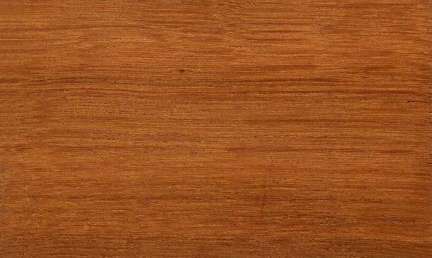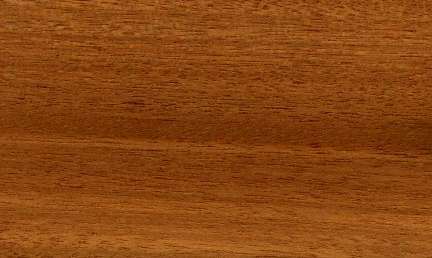 
Thingan (Hopea odorata)
Family: Dipterocarpaceae
Common names: Andaman thingan, Borneo yacal, Cay sao ba, Che ke, Chengal, Chengal kampong, Chengal mas, Chengal pasir, Chengal pulau, Co ky, Damar poetih, Dasal lanang, Djempina, Gagil, Jangkang, Kan ki, Kawang, Kedemoet, Ken, Khaen, Khen, Khen hua, Ko ki, Koki, Koki mosau, Koki thmar, Luis, Mai takien, Manggachapui, May ken, Merawan, Merewan, Net, Nggir, Rimda, Rinda, Safed thingan, Sanga, Sao, Sao den, Sao hoki, Sauchi, Sawkwar, So ke, Takhian, Takhian thong, Takhian tong, Takhian yai, Takhian-tong, Takian, Takien, Thingab, Thingan, Thingan byu, Thingan net, Thingan wa, Thinsingan, Thong, Tjengal, Wa, White thingan
Distributed in: Bangladesh, Burma, Cambodia, China, India, Indonesia, Laos, Malaysia, Myanmar, Thailand, Vietnam (Oceania and S.E. Asia)
Distribution overview: Andaman Islands, Thailand, Indo-china, and the Malay Peninsula where it is also planted in villages as a shade tree. It also grows in Chittagong in East Pakistan.
Common uses: Agricultural implements, Beams, Boat building (general), Boat building, Bridge construction, Broom handles, Building construction, Building materials, Cabin construction, Cabinetmaking, Canoes, Carvings, Clogs, Concrete formwork, Construction, Crossties, Decks, Decorative plywood, Domestic flooring, Excelsior, Factory construction, Factory flooring, Flooring, Flooring: commercial heavy traffic, Flooring: industrial heavy traffic, Form work, Foundation posts, Framing, Furniture, Handles, Handles: general, Heavy construction, Interior construction, Interior trim, Joinery, Joists, Ladders , Ladders, Lifeboats, Light construction, Millwork, Mine timbers, Moldings, Parquet flooring, Particleboard, Piling, Planks, Plywood, Porch columns, Pulp/Paper products, Railroad ties, Roofing, Shade rollers, Shingles, Sporting Goods, Tool handles, Toys, Turnery, Vats, Vehicle parts, Windows
Product sources: Species in the Hopea genus are reported to produce timbers that may fall into one of two groups, referred to by the name of the best known species in that group. The two classes are the Yacals and the Mangachapuys. Timbers in the Yacal class are harder, heavier, stronger, darker (when fresh), more resistant to decay, and more cross-grained. Commercially, the Yacals are reported to include several species of Shorea and of Vatica which produce timbers that are almost identical. The Yacals are the most abundant of the very hard, strong, and durable high-class construction timbers of the Philippine Islands.Apart from timber, the tree is also a source of other non-timber products: the bark yields large amounts of tannin that is especially suitable for curing certain types of leather, the bark itself is used in medicine as an astringent, and the tree produces 'rock dammar'. Powdered resin from the tree is also used as styptic.
Environment profile: Vulnerable in parts of its natural habitat
Tree size: Trunk diameter is 250-300 cm
Colors: the heart isYellow to golden-yellow to orange, Yellowish tanand the sapwoodWhite to yellow, Yellow.The grain isStriped figure, the textureMediumand the lusterPronounced
Natural durability: Susceptible to marine borer attack, Very durable
Odor: No specific smell or taste
Silica Content: Siliceous
LightInduced Color Change: Darker
Kiln Schedules: UK= C US=T3C2/T3C1 Fr=3
Kiln Drying Rate: Slow (18-28 days for boards < 32 mm, to 52-84 days for boards >= 63 mm)
Drying Defects: Slight surface checking, Splitting
Ease of Drying: Thick Stock Requires Care
Tree Identification: Bole/stem form is straight
Comments: General finishing qualities are rated as good
Blunting Effect: Moderate
Boring: Poor to very poor results
Carving: Generally good results
Cutting Resistance: Moderate to saw
Gluing: Fairly Easy to Very Easy
Mortising: Poor to Very Poor
Moulding: Poor to Very Poor
Movement in Service: Poor to Very Poor
Nailing: Fair to Good , Fairly Easy to Very Easy
Planing: Reduction of cutting angle prevents tearing in areas of irregular grain
Resistance to Impregnation: Sapwood is permeable
Response to hand tools: Yields a smooth, clean finish
Routing recessing: Routing is easy
Sanding: Poor to Very Poor Results
Veneering qualities: Veneers easily, Veneers moderately easy
Screwing: Fair to Good Results, Fairly Easy to Very Easy; Turning: Poor to Very Poor Results
Polishing: Satisfactory; Staining: Very Good to Excellent;
- Numerical data Metric
- Numerical data English
- Strength properties
- References
 |
 |
 |
 |
| Item |
Green |
Dry |
Metric |
| Specific Gravity |
0,6 |
0,63 |
|
| Density |
|
753 |
kg/m3 |
| Bending Strength |
705 |
1103 |
kg/cm2 |
| Crushing Strength |
359 |
587 |
kg/cm2 |
| Hardness |
|
752 |
kg |
| Impact Strength |
83 |
71 |
cm |
| Shearing Strength |
|
143 |
kg/cm2 |
| Stiffness |
111 |
128 |
1000 kg/cm2 |
| Tangential Shrinkage |
6 |
|
% |
| Radial Shrinkage |
3 |
|
% |
| Weight |
833 |
737 |
kg/m3 |
| Maximum Load |
|
|
cm-kg/cm3 |
| Toughness |
|
|
cm-kg |
| Static Bending |
|
|
kg/cm2 |
|
 |  |  |  | | Item | Green | Dry | English | | Bending Strength | 10040 | 15692 | psi | | Density | | 47 | lbs/ft3 | | Hardness | | 1658 | lbs | | Impact Strength | 33 | 28 | inches | | Maximum Crushing Strength | 5114 | 8360 | psi | | Shearing Strength | | 2047 | psi | | Stiffness | 1591 | 1829 | 1000 psi | | Specific Gravity | 0.6 | 0.63 | | | Weight | 52 | 46 | lbs/ft3 | | Radial Shrinkage | 3 | | % | | Tangential Shrinkage | 6 | | % | | Volumetric Shrinkage | 9 | | % | |
Shrinkage, Radial = small
Density (dry weight) = 46-52 lbs/cu. ft.
Modulus of Elasticity (stiffness) = low
Hardness (side grain) = medium
Density (dry weight) = 38-45 lbs/cu. ft.
Bending strength (MOR) = medium
Shrinkage, Tangential = small
Shrinkage, Tangential = moderate
Max. crushing strength = medium
Density (dry weight) = 53-60 lbs/cu. ft.
Shrinkage, Tangential = very small
Shrinkage, Tangential = fairly large
Shrinkage, Radial = very small
Shrinkage, Radial = moderate
Shearing strength (parallel to grain) = medium
Shearing strength (parallel to grain) = low
Max. crushing strength = high
Brown, W.H.,1978,Timbers of the World, No. 4 South East Asia,TRADA, Red Booklet SeriesChowdhury, K.A. and S.S. Ghosh. 1958. Indian Woods - Their Identification, Properties and Uses, Volume I - Dilleniaceae to Elaeocarpaceae. Published by the Manager of Publications, Delhi, India.Chudnoff, M.,1984,Tropical Timbers of the World,U.S.A. Department of Agriculture, Forest Service, Forest Products,Laboratory, Madison.Farmer, R.H.,1972,Handbook of Hardwoods,HMSOFundter, J.M.,1982,Names for Dipterocarp timbers and trees from Asia,Pudoc, Wageningen, NetherlandsGamble, J.S.,1902,A Manual of Indian Timbers,Sampson Low, Marston & Co. LondonHoward, A.L.,1948,A Manual of Timbers of the World.,Macmillan & Co. Ltd. London 3rd ed.I. Soerianegara and R.H.M.J. Lemmens (Editors,1993,Plant Resources of South-East Asia 5,(PROSEA, 1,Timber trees: Major commercial timbers,Pudoc Scientific Publishers, Wageningen 1993Keating, W.G., Bolza, E.,1982,Characteristics properties and uses of timbers. South East Asia, Northern,Australia and the Pacific,C.S.I.R.O. Div. Chemical Technology,Inkata Press,1Kraemer, J.H.,1951,Trees of the Western Pacific Region,West Lafayette, Indiana U.S.A.Limaye, V.D. 1954. Grouping of Indian Timbers and Their Properties, Uses, and Suitability. Indian Forest Records (New Series). Timber Mechanics. Volume 1 No. 2. Manager of Publications (Publisher, DelhiLimaye, V.D. and B.R. Sen. 1956. Weights and Specific Gravities of Indian Woods. Indian Forest Records (New Series). Timber Mechanics. Volume 1 No. 4. Manager of Publications (Publisher, DelhiMenon, P.K.B.,1959,The wood anatomy of Malayan timbers: commercial timbers, 3. Light,hardwoods,Malaysian Forest Research Institute Kepong, Research Pamplet, No. 27.Netherlands - Houtinstituut T.N.O,1964,Sao - Hopea odorata Roxb.,Houtinstituut T.N.O, Delfr.Pearson, R.S., Brown, H.P.,1932,Commercial Timbers of India,Govt. Printer Calcutta,2 volsSono, P.,1974,Merchantable Timbers of Thailand.,Forest Products Research Division, Royal Forest Department, Bangkok,,Thailand.Suvarnasuddhi, K.,1950,Some Commercial Timbers of Thailand - Their Properties and Uses,Royal Forest Department, ThailandTewari, M.C., Jain, J.C.,1980,Utilization of Secondary Species,Journal of the National Building Organization 25(2) pp1-6Timber Development Association Ltd.,1955,World Timbers (3 Vols.,Timber Development Association Ltd.WCMC.1992.Conservation Status Listing - Trees and Timbers of the World.World Conservation Monitoring Center - Plants Programme, Cambridge, CB3 ODL, United Kingdom.
|









